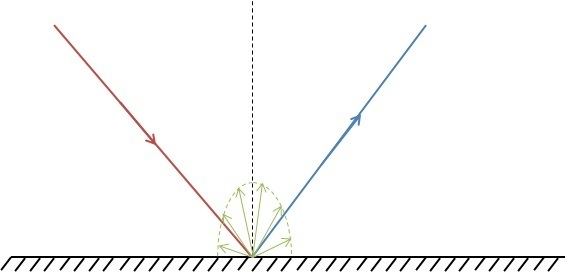 | ||
Diffuse field acoustic testing is the testing of the mechanical resistance of a spacecraft to the acoustic pressures during launch.
Contents
- Diffuse field principle
- Reverberation time
- Geometrical approach
- Quantities involving diffuse pressure field
- Aerospace application
- Accelerometer measurement
- Sound generation
- Advantages
- Disadvantages
- Examples
- References
In the aerospace industry, acoustic chambers are the main facilities for such tests. A chamber is a reverberant room that creates a diffuse sound field and is composed of an empty volume (from 1 m3 to 2900 m3) and a multifrequency sound generation system.
Diffuse field principle
Theoretically, diffuse field is defined as a Sound pressure field where there is no privileged direction of the energy. In other words, when sound pressure is the same everywhere in the room. This is obtained with large rooms with no absorbent materials on walls, ceiling or floor. Diffusionis enhanced in asymmetric rooms. To obtain such conditions, the room must be reverberant. The source's direct field must be negligible compared to the reverberant field, avoiding privileged propagation.
Reverberation time
Reverberation is due to multiple reflections on walls with some delays that come back to the receptor. Summing up these contributions, a reverberant pressure field is created. The more reverberation, the more the field is diffused.
Two oft-used measures of reverberation time quantify this parameter, :
Where
Geometrical approach
Many theoretical ways to model sound propagation are used. One of these is the geometrical approach. This represents sound waves as a ray of energy propagating. When it meets an obstacle, this ray has two possible behaviors: It can be reflected following the normal of the plan, specular reflection. Alternatively it can be separated into many rays following a mathematical law (for example Lambert's law), diffused reflection.
Quantities involving diffuse pressure field
Frequency is a main factor of a good diffused field. Some phenomena linked to frequency of the sound pressure field lead to poor homogeneity of a pressure field. The frequency response of a room is the amplification or reduction of some frequencies. It represents the repartition of pressure with respect to frequency. In low frequencies this can lead to mode apparition. These modes are due to standing waves that lead to maximum and minimum pressure according to the geometry of the room. To determine the frequency for which the pressure field can be considered diffused, Schroeder's frequency is commonly used. It is obtained considering the frequency from which the modal overlap exceeds
Where
For example, in the case of a rectangular room, low frequency modes are determined relative to the room dimensions as
Where
Aerospace application
Acoustic tests are mainly use for environmental tests on aircraft structures. Satellites are expensive products with high-engineering built-in components. To improve the resistance of a spacecraft during launch and during its orbital life, analysis is focused on tests in three categories : Thermal, Radio-frequencies and Vibrations. This last test area is focused on the mechanical stresses that the specimen will meet during its life, especially during launch.
Acoustics creates mechanical stresses during the first five seconds. Sound pressure levels can go up to 150 dBSPL. Acoustic tests are used to verify the mechanical resistance of the satellite and its elements to acoustic pressures generated.
Accelerometer measurement
Once the sound generation system is working, acceleration measurement is performed by accelerometers placed on the specimen.
Sound generation
To test a satellite, a sound generation system generates a broadband spectrum ([25 Hz-10000]Hz) simulating the maximum envelope of all launchers that the satellite may fly in. To qualify, three tests are realized with changing global gain compared to launcher spectrum:
Before testing the satellite, an empty room test is performed to check the chamber's signature.
This pressure field is generated by multifrequency sirens powered by nitrogen or compressed air modulators. This system can generate sound pressure levels up to 160 dBSPL. Each acoustic chamber has its own configurations, but each siren is centered on a frequency where sound pressure levels are the highest. In some cases these sirens can be completed with electroacoustic systems to generate and control midrange and high frequencies. Sirens generate low frequencies, but with high sound pressure levels distortion appears that leads to higher harmonics. Loudspeakers are used in some chambers to control these frequencies.
To produce exact levels, piloting microphones check sound pressure levels and apply a realtime gain correction to adjust the level.
